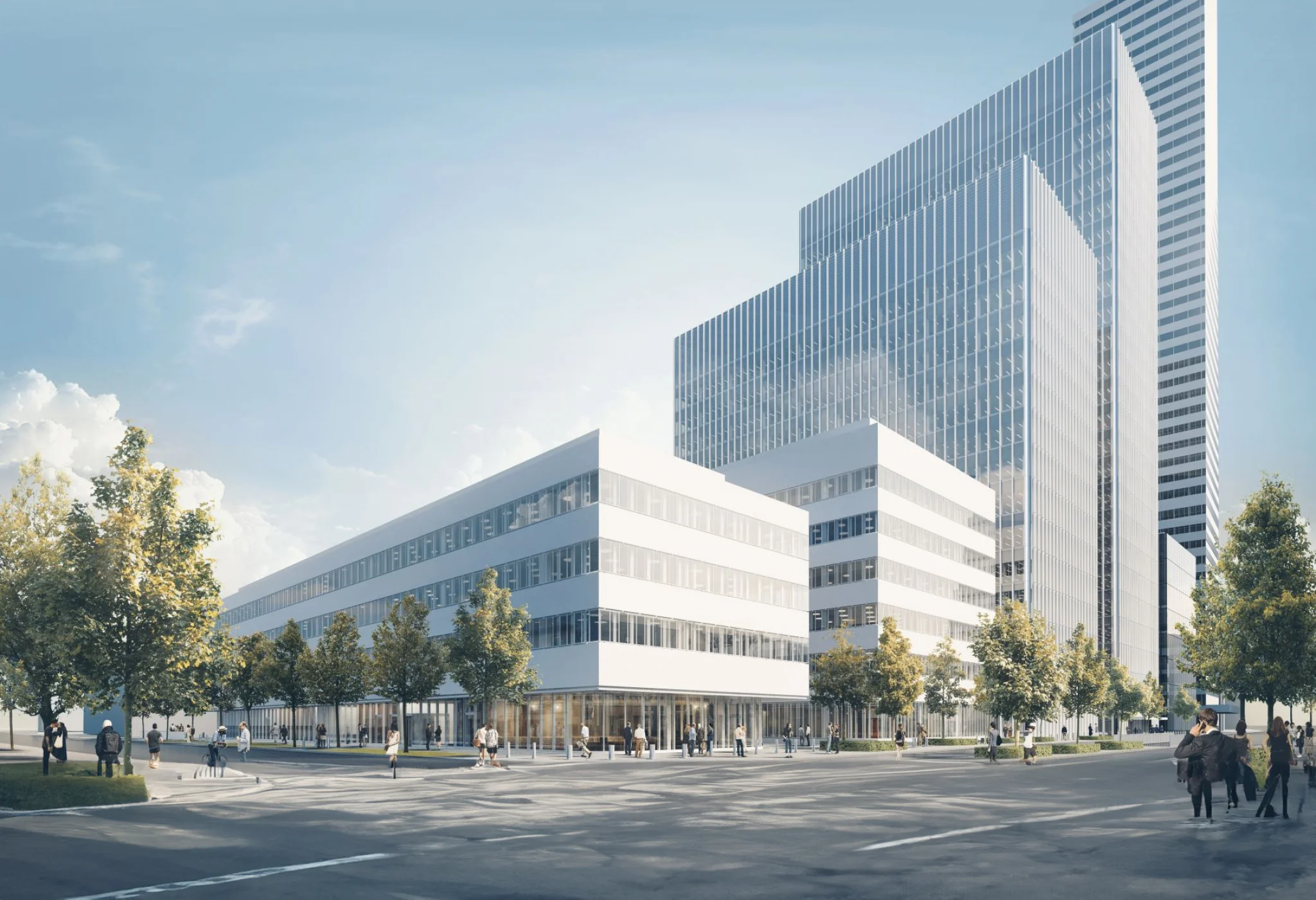Important Milestone in the Roche pRED Innovation Center Project

The pRED Innovation Center comprises a new research and development centre spread over four buildings in the heart of Basel. A state-of-the-art Convention Center, office workstations and flexible laboratory workstations are distributed across the four buildings. These will be equipped with the latest available technologies.
CTE was entrusted with the task of networking the entire research center and adjacent buildings with regard to technical building automation. In addition, a highly available and scalable computing infrastructure will be provided for the technical facilities.
Successful Factory Acceptance Test Amidst the SARS-CoV-2 Pandemic
The FAT for the infrastructure of the pRED Innovation Center was carried out under special circumstances. In a time of a global pandemic, CTE and those responsible at Roche had to show that they had the necessary technologies and flexibility to hold a FAT virtually for the most part. The testing of the systems, which required the physical presence of individuals, was reduced to a minimum in terms of time and took place under appropriate hygiene protection conditions at the time.
The pRED Innovation Center Basel relies on a highly available and centralised infrastructure. This means that all systems are connected to one network, the so-called 'collapsed backbone'.
This network is implemented with the latest technologies and high security standards. The central and highly available computing infrastructure in the form of a 'stretched cluster' offers reliable operation for all systems and applications at pRED Innovation Center Basel. By using a 'hyperconverged infrastructure', free scaling, in terms of both computing power and storage capacity, is possible, thus allowing for adaptations to meet future requirements.
The centralisation of infrastructures can prevent a proliferation of different components and manufacturers within a building or building complex. By using consistent components, specific to the industrial environment, and adhering to industrial standards, such a complex system can be managed and monitored appropriately.
Extremely High Availability Requirements
As centralised infrastructures form the backbone of the entire building complex, a failure would have far-reaching consequences. Network monitoring and central configuration management require the centralisation and standardisation of components.
As part of the FAT, CTE, which specialises in high-availability infrastructures for the industrial sector, was able to prove that the failure of individual systems as well as complete system locations does not impair the function of the entire infrastructure. By deploying redundant systems distributed across strategically sensible locations throughout the various buildings, the component known as a 'Single Point of Failure' can be eliminated. This enables us to meet the highest protection goal in the area of OT: availability.
Outlook
Now that the performance and security of the infrastructure have been tested and approved, we are looking forward to putting the system into operation in the near future and supporting the building technology suppliers in integrating their systems into the central infrastructure.


